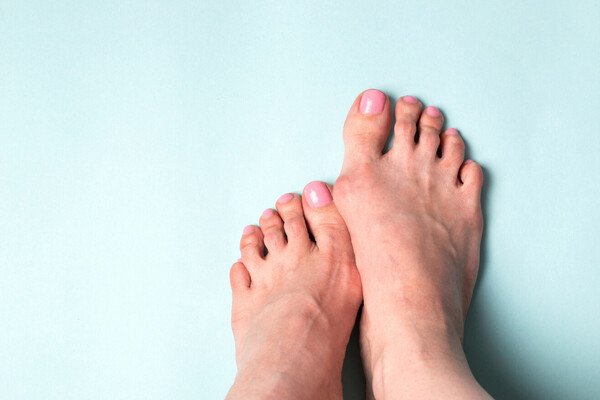6 Reasons Why You Should Consider Bunion Removal Surgery
If bunion pain makes it hard to wear shoes, walk comfortably, or stay active, it may be time to consider surgical treatment. Bunions are not just cosmetic — they’re progressive deformities that worsen over time if left untreated. While conservative care like padding, orthotics, and footwear changes can help early on, surgery is often the only way to correct the underlying joint misalignment.
At Foot & Ankle Centers of South Jersey, our board-certified podiatrists perform advanced bunion removal and correction surgeries, including minimally invasive and Lapiplasty® procedures, to restore comfort and long-term joint health.
Key Takeaways
Bunion surgery corrects bone misalignment, not just pain.
Surgery is recommended when conservative care no longer helps.
Advanced techniques like Lapiplasty® improve stability and recovery.
Early treatment prevents worsening pain and deformity.
Relief is possible at our offices in Woodbury Heights, Turnersville Voorhees Township, Haddon Heights, and Pine Hill.
What Is a Bunion and Why Does It Develop?
A bunion (hallux valgus) forms when the big toe drifts toward the second toe, causing the metatarsal bone to push outward. This creates a visible bump and chronic irritation at the joint. Genetics, flat feet, poor footwear, and arthritis can all contribute to bunion development.
Over time, the joint becomes inflamed and misaligned, making walking painful and shoes difficult to wear. According to the American Orthopaedic Foot & Ankle Society (AOFAS), bunions tend to progress without treatment, eventually requiring surgical correction.
6 Reasons to Consider Bunion Removal Surgery
1. Persistent Pain That Interferes with Daily Life
If you feel pain with every step — even in comfortable shoes — it’s a sign the bunion has become more than a minor nuisance. Once the joint becomes arthritic or the soft tissue inflamed, conservative care provides only temporary relief. Surgery can realign the joint and relieve pressure permanently.
2. Difficulty Wearing Shoes or Walking Normally
As bunions enlarge, the joint rubs against footwear, causing calluses, blisters, or pressure wounds. Many patients switch to wide or open-toed shoes only to find even those become painful. Surgical correction allows you to return to normal footwear and improves balance during walking or exercise.
3. Visible Deformity or Toe Overlap
Advanced bunions can cause the big toe to cross over or under neighboring toes, leading to secondary deformities like hammertoes or corns. Correcting the alignment prevents additional problems and preserves long-term foot structure.
Our team often recommends Lapiplasty® 3D Bunion Correction — an innovative approach that fixes the bunion at its root by stabilizing the entire metatarsal bone in three dimensions.
4. Conservative Treatments Are No Longer Effective
You may have tried orthotics, splints, or physical therapy for months without relief. Once pain and swelling persist despite these options, surgery becomes the most effective solution.
Conservative management may slow bunion progression but cannot reverse joint misalignment. The American College of Foot and Ankle Surgeons (ACFAS) notes that delaying surgery in moderate-to-severe cases often leads to more complex procedures later.
5. Preventing Joint Arthritis and Long-Term Damage
Chronic misalignment wears down cartilage and stresses surrounding ligaments, increasing the risk of arthritis. Early bunion correction reduces the chance of permanent joint damage and deformity.
The Mayo Clinic reports that patients who undergo timely surgical correction typically enjoy better pain relief and less stiffness in the long run.
6. Improved Confidence and Quality of Life
Beyond pain relief, many patients choose bunion surgery to restore confidence in how their feet look and feel. Straightened toes, improved symmetry, and pain-free walking all contribute to better mobility and quality of life.
Our specialists tailor every procedure to your lifestyle, activity level, and recovery goals — whether that means walking comfortably again or returning to sports.
What to Expect After Bunion Surgery
Recovery varies by procedure and severity, but most patients return to normal activities within 6–8 weeks. With Lapiplasty® or minimally invasive techniques, many can bear partial weight earlier.
Typical recovery stages include:
First 1–2 weeks: Rest, elevation, and limited weight-bearing.
Weeks 3–6: Gradual transition into a walking boot or supportive shoe.
Weeks 6–12: Physical therapy and strengthening exercises.
Your surgeon will guide you through every step, ensuring safe healing and long-term correction.
When Is It Time to Talk to a Specialist?
You don’t need to wait until your bunion becomes unbearable. Schedule a consultation if you notice:
Daily pain despite supportive footwear or orthotics.
Worsening swelling or redness around the big toe joint.
Difficulty walking long distances or maintaining balance.
Increasing toe deformity or overlap.
Our board-certified podiatrists will assess your X-rays, gait, and pain history to determine whether conservative management or surgery is right for you. Visit any of our South Jersey offices in Woodbury Heights, Turnersville Voorhees Township, Haddon Heights, and Pine Hill for expert care.
FAQs About Bunion Surgery
-
Pain is typically mild to moderate and well controlled with medication. New minimally invasive techniques minimize discomfort and swelling.
-
Most patients return to light walking within 6–8 weeks and resume full activity in 3–4 months.
-
Recurrence is rare when alignment is corrected at the bone level, especially with Lapiplasty®.
-
If you experience daily pain, shoe limitations, or visible toe deformity, surgery may be the best long-term solution.
-
Complications are uncommon but can include stiffness, swelling, or nerve irritation. Choosing an experienced podiatric surgeon minimizes risks.
We Are Your Partner in Bunion-Free Living!
If you're still wondering, "Bunion surgery—is it worth it?" know that for many individuals, the benefits far outweigh the inconvenience of recovery. At Prime Foot and Ankle Specialists, we provide expert bunion removal services designed to restore comfort and mobility.
Our skilled surgeons and personalized care ensure that patients receive the best treatment for long-term relief. Don’t let bunions hold you back—schedule your consultation today and take the first step toward a pain-free life!


